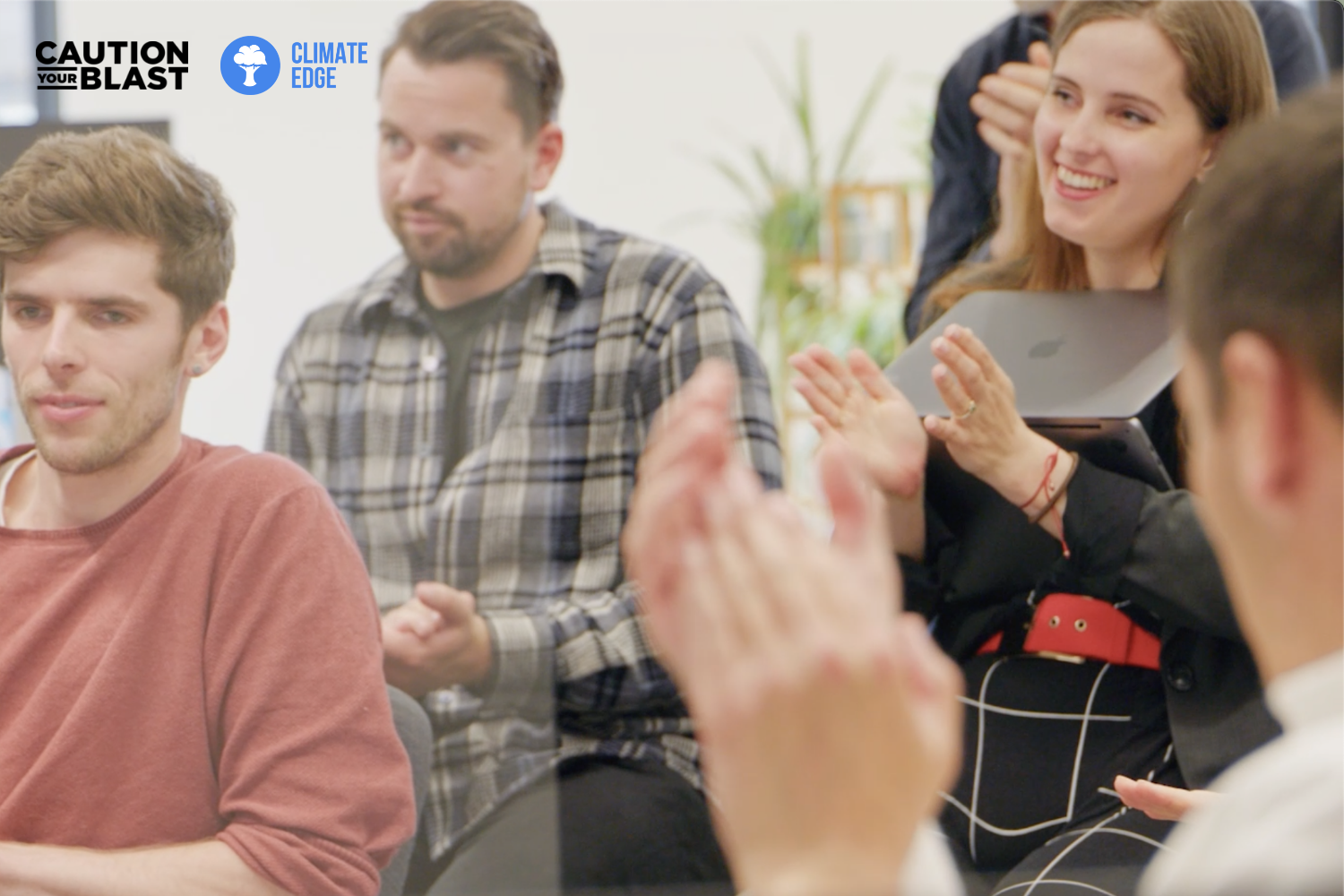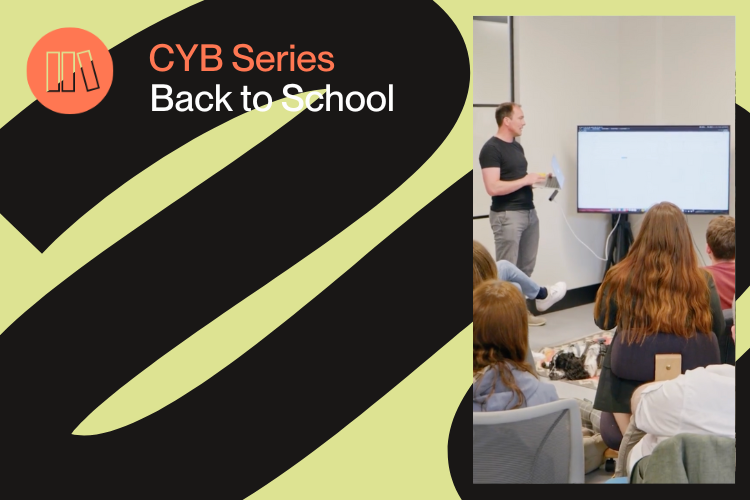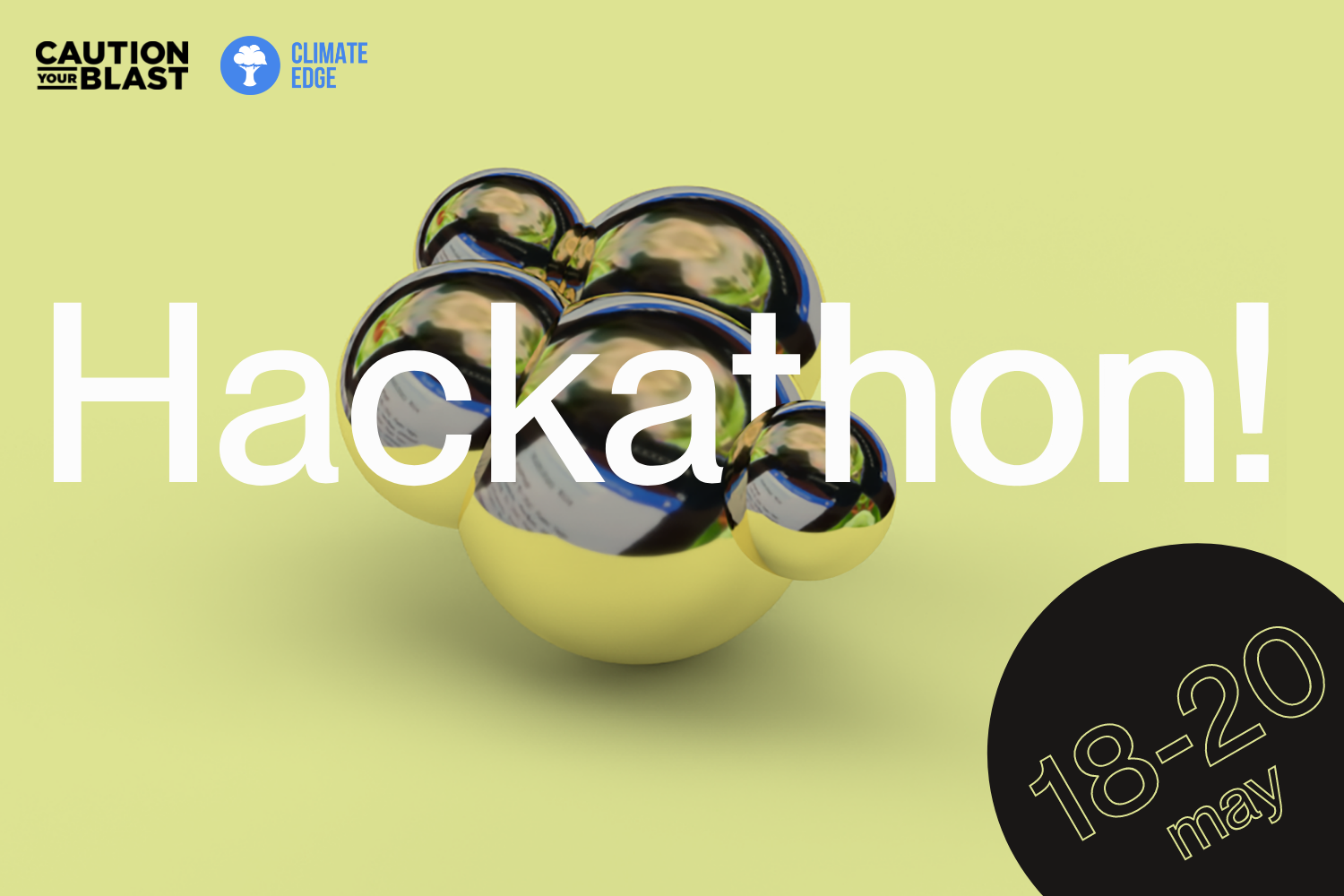
One week on from Caution Your Blast’s first hackathon of 2022 - how it went, what we did, and what we learned.
The Challenge
Last week Richard Bray wrote a piece introducing the whats and whys of Caution Your Blast and Climate Edge’s first Hackathon of 2022. Through their engagement platform, Climate Edge is helping to connect smallholder farmers with agricultural supplies and services in technologically underdeveloped countries. The platform also provides businesses with data on farmers who have subscribed for information from them.
Together with Caution Your Blast’s specialist skills in digital design and development, we took up the hackathon challenge - how might we present organisations serving smallholder farmers with the relevant and timely information needed to help them better scale their business?
For the event we split into three evenly distributed teams each consisting of a wide range of service development skills including service design, user research, software engineering, and delivery management.
Day 1
Our amazing service designer and user researcher, Christine and Katie respectively, introduced all the teams to the Lean UX canvas; a tool for facilitating customer-centric analysis, discussion, and ideation in cross-functional teams. We used it as a guide for understanding the problem space, empathising with the various Climate Edge platform users, and the exploration of the problem statement and potential solutions. It turned out to be an excellent lightweight tool for grappling with the issue in the limited time afforded by a hackathon.
As we explored and researched the working lives of African farmers and marketers in the agricultural businesses that serve them, we were coming to terms with the true difficulty of information access in a world where smartphones and the internet are not ubiquitous. But these are the kinds of problems that make a hackathon, interesting and challenging real world problems.
Our team used the canvas to help develop two personas over the first two days that embody the typical goals, behaviours, information needs, and problems faced by those in the industry. Kehinde, a marketing & sales manager at Aubergine2U and a hypothetical Climate Edge customer, and her customer Solomina, a chilli & aubergine farmer in the Narok region of Kenya. We each made great progress in understanding the problem thanks to the Lean UX canvas, and ended day one with a few ideas starting to sprout.
Day 2
Day two arrived and the teams were busy filling walls with sticky notes and drawings on electrostatic whiteboard paper. We felt we’d hit on some solid pain points and promising solutions that could be Climate Edge’s next big feature. But first we needed to filter, refine, and articulate them. The deep expert knowledge Climate Edge imparted to us about their customers was crucial. Understanding how trust is established and information flows via neighbours, cooperatives, and businesses was essential for patching up our hastily acquired knowledge.
This was one of those problems that really highlighted the importance of understanding your users. For example, many farmers using the Climate Edge platform can only interface through text using a classic mobile phone, and cultivate only a few hectares of land each. They care more about stability and year-on-year consistency of harvest than business growth or maximising income. If we had based our assumptions on relatively technologically advanced and culturally dissimilar countries, such as the UK, then our proposals would have fallen flat. They would make perfect sense to us, but be useless for those we were trying to support.
By the end of the day we had generated four ideas for helping Climate Edge business customers better target their users and scale up:
We believe that providing Kehinde with a machine learning powered data visualisation dashboard & training her how to use it will enable Kehinde to better make data-driven decisions.
We believe that enabling farmers to search for an agricultural supplier type will achieve increased channel subscriptions for Kehinde.
We believe that enabling Kehinde to personalise packaging will achieve an increase in brand trust from her customers.
We believe that making marketing content suggestions for Kehinde to send to farmers will achieve increased trust in Kehinde by farmers.
We also designed a storyboard and began articulating the ideas for the presentation on the third and final day. There is often a feeling of being rushed to finish prototypes and formulate convincing presentation stories as a hackathon’s penultimate afternoon ends. But we were feeling confident about finishing prototypes and finalising presentations on time.
Day 3
The final morning in a hackathon is always full of tension and excitement. Will we finish on time? Will the hacked together prototype fail at the presentation's climax? What have the other teams been working on?
We managed to put such thoughts aside and rolled in for the final morning sprint to the finish line. We split up to wireframe user interfaces, craft a polished presentation, and rehearse the tale of how Kehinde and Solomina would utilise our proposed Climate Edge platform enhancements.. It would have been nice to have an interactive demonstration dashboard to show off how business customers, such as Kehinde, would use and benefit from the proposed features but time was short and the technology was refusing to play ball.
As 2:00pm came round we all downed pens and prayed to the relevant technology Gods for good fortune in the upcoming demonstrations. In the end each team put forward a fantastic presentation discussing their ideas, methodology, difficulties, and anything they had learnt along the way. A lot of effort went into problem solving and it showed.
One common proposal across the teams was some form of data dashboard. The Climate Edge platform currently provides data to businesses on farmers subscribed to them, but marketers and sales staff are not skilled nor equipped to analyse it. Each team picked up on this and explored the use of data visualisations to fully utilise the information and enable better data driven decisions. Data for an organisation is akin to money for a charity, if we don’t have the means to use it effectively then we won’t be able to make the real world impact we strive for.
Key Outcomes
It was a great three days getting to know the unique challenges faced by African smallholder farmers and their material suppliers. The Lean UX canvas, user research, and storytelling skills shared amongst the teams will be invaluable in understanding and communicating with each other in future work. If I was to take away three things from this Hackathon it would be:
take the time to really understand your customers, including their constraints, incentives, and goals;
play to your strengths and seek out others with specialist knowledge where you don’t shine so well;
and base your stories around relatable individuals, real or crafted, to more effectively connect proposed ideas and real world impact in the minds of your audience.
Overall, the hackathon was a great experience and opportunity for the whole CYB team to come together and work on what matters most to us all - using digital as a force for good.
If you’re interested in collaborating with Caution Your Blast for its next hackathon or would like to find out more about the digital transformation services we offer, please get in touch via info@cautionyourblast.com.


